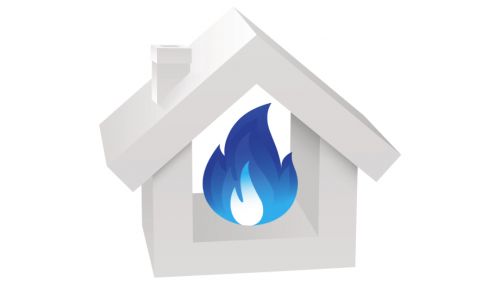All
Preventive Treatment Keeps Oil Moving in the Cold
by David Lodding, Lincoln Laboratory

Cold weather is the bane of home heating oil that is stored outside, whether above ground or below. The typical problem is blockage due to gelling, wax accumulation on filters or strainers, or frozen condensate in the supply line or filter. While additive use can prevent these problems, it is important to distinguish between oil problems and water problems. Often thought of together, they are separate issues that require separate preventive treatments.
Regarding oil issues, industry professionals generally know the terms cloud point and pour point. Cloud point is the temperature at which a cloud of wax crystals begins to form. Wax remains in suspension and can build up on filters or strainers to block oil flow to the burner. Pour point is the temperature at which the oil will just flow. Lower than the cloud point, it is the temperature at which the oil has virtually gelled and cannot flow to the burner. These definitions are clear, but in practice cloud point and pour point temperatures are moving targets.
The State You’re In
ASTM specifications for No. 2 oil include a cloud point minimum temperature requirement that varies by state and from month to month. For example, while the temperature minimum for oil delivered in New Jersey is 36°F in October and 10°F in January, for oil delivered in Massachusetts it’s 28°F in September and 0°F in January. To complicate matters further, these specifications are “10th Percentile Minimum Temperatures,” which means that actual temperatures will fall below the specification approximately 10% of the time. This is why oil flow problems occur and additional low temperature protection is needed.
The preventive approach for cold weather is to treat the oil with a cold flow improver in advance. Also called pour point depressants, these additives modify the wax crystal structure and lower the temperature flow range of the oil, usually by 20°F or more. These products will not melt wax or liquefy gelled fuel; only heat can return oil to its original condition. Given the monthly variations, the safest policy is to treat outside tanks with each delivery. It’s cheap insurance against an expensive no heat emergency.
Cold flow improvers are described by the number of degrees they lower the cloud point or pour point. In other words, the additive is giving protection beyond the original cloud point of the oil. This can be confusing because you need to know the cloud point temperature of the oil being treated to really know what temperature protection you are getting. For example, if an additive will lower the cloud point by 20°F, then oil with an original cloud point of 30°F will be protected to a temperature of 10°F. While it is nearly impossible to be precise about the original cloud point, by treating outside tanks with a cold flow improver that gives at least 20°F improvement your oil should not wax or gel.
Treating Water
Frozen condensation water, or icing, is the second cold weather problem, requiring an additive that treats the water rather than the oil. Icing is easy to understand, because water always freezes at 32°F. Water condenses and settles to the bottom of the tank and can migrate to the filter and oil supply line. Depending on the amount of condensation, outside tanks can be vulnerable to ice blockages at temperatures of 32°F or lower. A good deicer additive will remove normal amounts of condensed water and serve as an anti-freeze for larger quantities of water. Just as with cold flow treatment, preventative anti-icing treatment in advance of cold weather is the safest policy. Some deicer products are able to thaw frozen lines and filters. But why wait for an emergency?
The products described above are available in bottles for treating heating oil tanks individually. Proactive treatment throughout the heating season makes good sense. It is a service that provides additional profit and minimizes the chance for cold weather-related no heat emergencies and customer dissatisfaction.
Related Posts
 The Possibilities of Renewable Propane
The Possibilities of Renewable Propane
Posted on March 13, 2024
 Propane Can Do That
Propane Can Do That
Posted on March 12, 2024
 Take Action and Take Control of Your Future at Industry Summit VI and Visions ‘24
Take Action and Take Control of Your Future at Industry Summit VI and Visions ‘24
Posted on March 11, 2024
Enter your email to receive important news and article updates.

